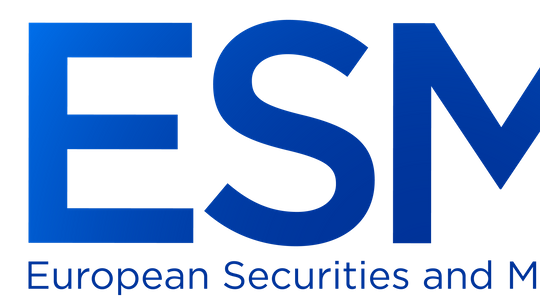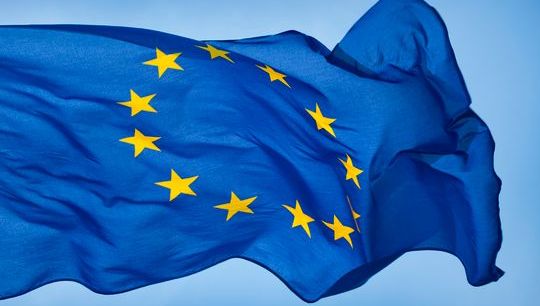AIFMD 2.0 – The negotiations begin
By Angelo Lercara; Patrick Goebel; Colin Sharpsmith; Philippa List , Dechert LLP
Published: 19 June 2023
Introduction
The European Commission (the Commission) on 25 November 2021 adopted a package of measures1 intended to deliver on several key commitments in the 2020 Capital Markets Union action plan, including a proposal to review the Alternative Investment Fund Managers Directive (AIFMD)2 (the Proposals),3 and (where relevant) the Directive relating to Undertakings for Collective Investment in Transferable Securities Directive (UCITS).4
The Council of Europe (the Council) formalised its position with regards to the Commission’s proposals in June 2022,5 and on 24 January 2023 the European Parliament’s Committee on Economic and Monetary Affairs (ECON) voted to approve the position taken by the Parliament regarding the Proposals.6 The next stage is for the Council, Commission and Parliament to debate the various points via the Trilogue process. The first Trilogue meeting took place on 8 March 2023 and the second on 9 May 2023. The Swedish Presidency of the Council has indicated that it hopes the Trilogue process will be completed by the end of its term in June 2023. Once the co-legislators have come to agreement, the changes to AIFMD would be made by a directive (AIFMD 2.0) that EU Member States would have 24 months to transpose into national law. AIFMD 2.0 is unlikely to take effect until 2025.
This article examines the positions taken by the Council and Parliament on some of the key areas the Proposals focus on. It is based on the current positions taken by the co-legislators as they commence the Trilogue process, and the final AIFMD 2.0 legislation may ultimately differ from what is outlined below.
Delegation
The AIFMD delegation structure currently allows alternative investment fund managers (AIFMs) to delegate certain tasks if prescribed conditions are met. The core requirement of the AIFMD is that an AIFM must not delegate its functions to the extent that, in essence, it is no longer the manager of the relevant AIF.
The Commission proposed that where an AIFM delegates portfolio management or risk management functions to entities located in third countries, competent authorities would be required to notify ESMA on an annual basis of all such delegations. The Council and Parliament have not taken this proposal forward.
The Council and Parliament agree that when applying for authorisation, an AIFM must provide information about the people effectively running the business, a program outlining the organisational structure and how they plan to comply with regulations, as well as details on delegating functions to third parties.
The Parliament suggests that when providing information about delegation, the AIFM should also explain how it benefits the investor. The Council proposes that Member States mandate authorised AIFMs to keep their provided information up to date with their competent authority.
The Parliament proposes expanding Annex I and requiring AIFMs to report any significant changes that could impact their authorisation, including changes to delegation arrangements with third parties, and that ESMA should develop regulatory technical standards (RTS) specifying the information required for AIFM authorisation applications, including the programme of activity and situations where alternative investment funds (AIF) names could be misleading. They also propose a comprehensive peer review analysis of competent authorities’ supervisory activities regarding delegation 12 months before the review of AIFMD 2.0, allowing more time for the new delegation provisions to become established and avoid ongoing policy uncertainty.
Loan origination funds
The Commission’s proposals include new retention requirements for AIFs to retain an economic interest of 5% of the notional value of loans they grant and sell off, a requirement for AIFs that originate loans exceeding 60% of their net asset value to be closed-ended, a concentration limit of 20% of capital for loans to a single borrower with a financial or collective investment undertaking, and new reporting requirements for AIFMs to report the portfolio composition of originated loans to investors under Article 23.
The Council has proposed a leverage cap of 150% for loan-originating AIFs, but there is no clear explanation for why it is needed or why the cap is set at that level. The AIFMD framework already allows for managing leverage, and neither the Commission nor the Parliament support the introduction of a cap.
The Parliament proposes defining a “loan originating AIF” as an AIF whose primary activity is originating loans and whose notional value of originated loans exceeds 60% of its net asset value, similar to the Commission’s proposal to ensure that the loan origination provisions apply to AIFs that engage significantly in loan origination and not to funds that issue only a few loans, which would otherwise be subject to additional rules and restrictions.
The Council and Parliament both propose that a loan originating AIF may be open-ended provided that its liquidity risk management system is compatible with its investment strategy and redemption policy. The Council position also proposes that ESMA develop a draft RTS to determine the requirements with which a loan-originating AIF must comply to maintain an open-ended structure.
The 20% concentration limit included in the Proposals is retained in both the Council and Parliament positions.
Like the Commission’s Proposals, the Council proposes that under Article 23 information be provided on the originated loan portfolio. The Parliament requires information on the portfolio composition of originated loans. The Council proposes introducing five-year transitional arrangements for
loan origination funds with a derogation for existing AIFs that do not raise additional capital, however, it is important to note that the five-year time starts from the date of adoption of AIFMD 2.0, not the date of transposition.
Liquidity risk management
The Commission’s proposals include provisions for liquidity risk management, addressing recommendations from the European Systemic Risk Board and ESMA for harmonising rules on the use of liquidity management tools (LMTs). The proposals also allow competent authorities to require AIFMs to activate or deactivate relevant LMTs, even for non-EU AIFMs. LMTs are widely used but not explicitly referenced in AIFMD or UCITS.
The Parliament and Commission propose a new Article 47(4)(d) that gives ESMA the power to require non-EU AIFMs marketing AIFs in the EU or EU AIFMs managing non-EU AIFs to activate or deactivate an LMT. In contrast, the Council does not support the Parliament and Commission, and its position would allow the AIFM to decide whether to activate or deactivate an LMT.
There is a question of whether ESMA should develop guidelines or RTS on the characteristics and selection of LMTs. The Council supports ESMA developing guidelines for selecting and using appropriate LMTs for liquidity risk management, including disclosures to investors, and RTS to specify the characteristics of LMTs. The Parliament favours ESMA developing RTS on disclosing information related to the selection and calibration of LMTs to competent authorities and investors, as well as guidelines for best practices regarding the characteristics of LMTs.
Depositary services
The Commission’s proposals include an interim measure allowing cross-border sourcing of depositary services, pending further review. The Council and Parliament propose that Member States should be able to authorise AIFMs and AIFs to appoint depositaries located in other Member States on a case-by-case basis. Depositaries must cooperate with competent authorities in both their home state and the AIF’s and AIFM’s home states. Depositaries in non-EU jurisdictions should not be established in high-risk third countries under Article 9(2) of the Anti-Money Laundering (AML) Directive.
The home Member State of an AIF may allow its national competent authorities to permit depositaries established in another Member State to be appointed on a case-by-case basis, provided that the competent authorities receive a motivated request from the AIFM demonstrating the lack of relevant depositary services that can meet the needs of the AIF. The depositary market of the home Member State of the AIF must meet certain conditions, such as having fewer than seven depositaries providing depositary services to EU AIFs with assets safekept below a certain threshold, or an aggregate amount of assets safekept not exceeding a certain amount. These thresholds vary between the Parliament and Council proposals.
Reporting
The Commission’s proposals for a new Article 23(4)(e) include quarterly reporting of all fees and charges directly or indirectly incurred or allocated to the AIF or its investments. The Council and Parliament propose annual reporting, but their positions differ on what should be reported. The Council and Commission are more aligned on what should be reported under Article 24, while the Parliament’s proposals are more open-ended. Overall, the reporting obligations under Articles 23 and 24 are likely to be significantly expanded in AIFMD 2.0.
Other items
The Parliament proposes that if an AIFM manages an AIF marketed to retail investors, at least one member of its governing body should be a non-executive director. The Parliament had previously proposed expanding the definition of “professional investor” to include those who commit to investing a minimum of €100,000 and have stated in writing their awareness of the risks and/or have listed senior staff, portfolio managers, directors, officers, agents or employees of the manager or its affiliate with sufficient knowledge of the AIF. However, this expanded definition is not included in the final Parliament position.
Conclusion
The co-legislators are largely aligned on LMTs and delegation, but there is disagreement on technical matters such as reporting delegation arrangements. Reporting obligations will be expanded. Loan origination is an area of disagreement, particularly regarding risk retention. Negotiations and debate are expected to continue, with the Council working party meeting on 26 May and political trilogues scheduled for 13 and 27 June. Time is short for resolving outstanding points before the end of the Swedish presidency in June.
1 The package of measures is available here.
2 Directive 2011/61/EUDirective 2011/61/EU
3 The Proposals for AIFMD are available here.
4 Directive 2009/65/EC
5 The Council’s position is available https://data.consilium.europa.eu/doc/document/ST-9768-2022-REV-1/en/pdf
6 The Parliament’s final report setting out its position with regards to the Commission’s Proposals is available https://www.europarl.europa.eu/doceo/document/A-9-2023-0020_EN.pdf





